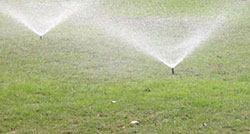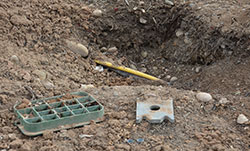
Spring is the time to repair irrigation systems. All sorts of potential surprises await the person who fires up an irrigation system in the spring. Some problems become immediately evident: heads that have mysteriously “gone missing”, heads that don’t rise, heads that don’t properly retract when turned off, missing or plugged nozzles, heads that don’t turn, and heads that aren’t perfectly or even close to vertical when operating. Every head should be visually examined for all of these problems at this time – and replaced, repaired or straightened before forgotten.

Other irrigation system issues may be less obvious, or even invisible, when the system is first turned on. These can include broken or cracked pipes, fittings that have become loosened, or leaks where heads are attached to risers. The wet spots associated with underground leaks may not appear for weeks.
Even less noticeable are lawn issues including dry and wet spots, often directly related to the sprinkler application rate and distribution uniformity. Distribution uniformity really can’t be “eyeballed”, except perhaps in the case of an extremely poor system design. More often it “looks like” water is being applied everywhere when, in reality, distribution uniformity is far from ideal.
While no irrigation system will ever apply water perfectly, performing an informal or better yet a formal irrigation audit in the spring will reveal coverage problems. This can avoid stressed or damaged turf later in the growing season.



